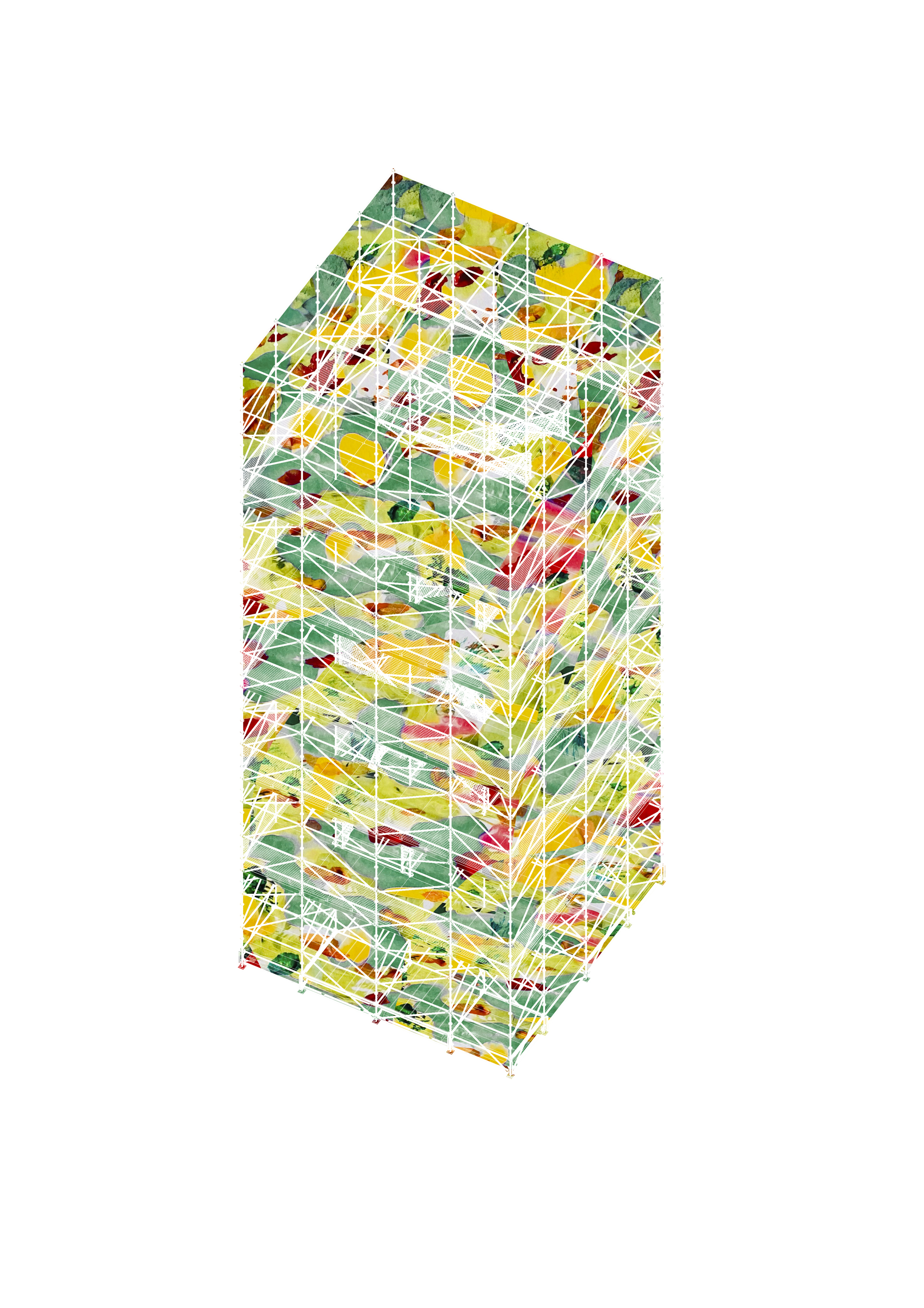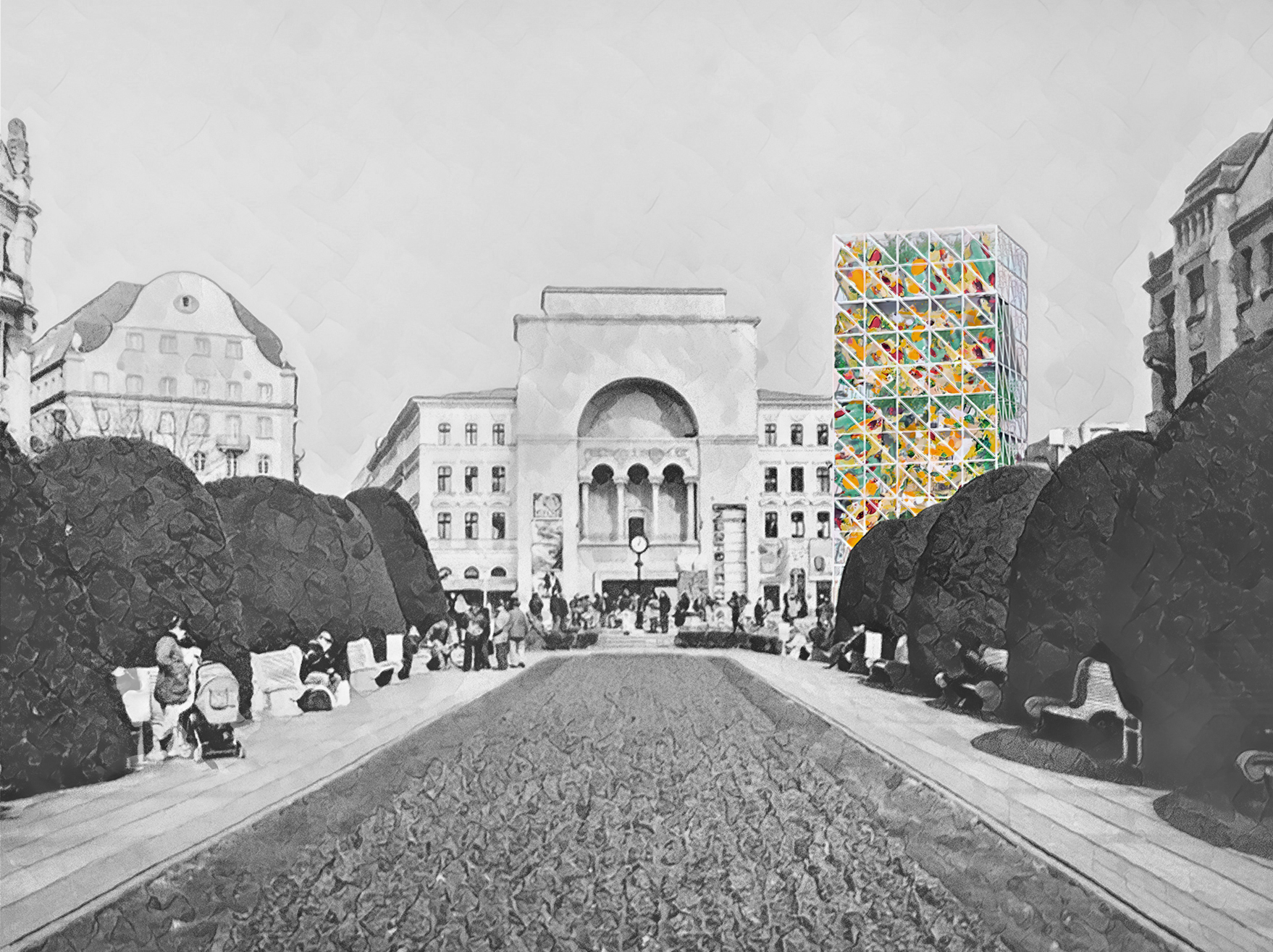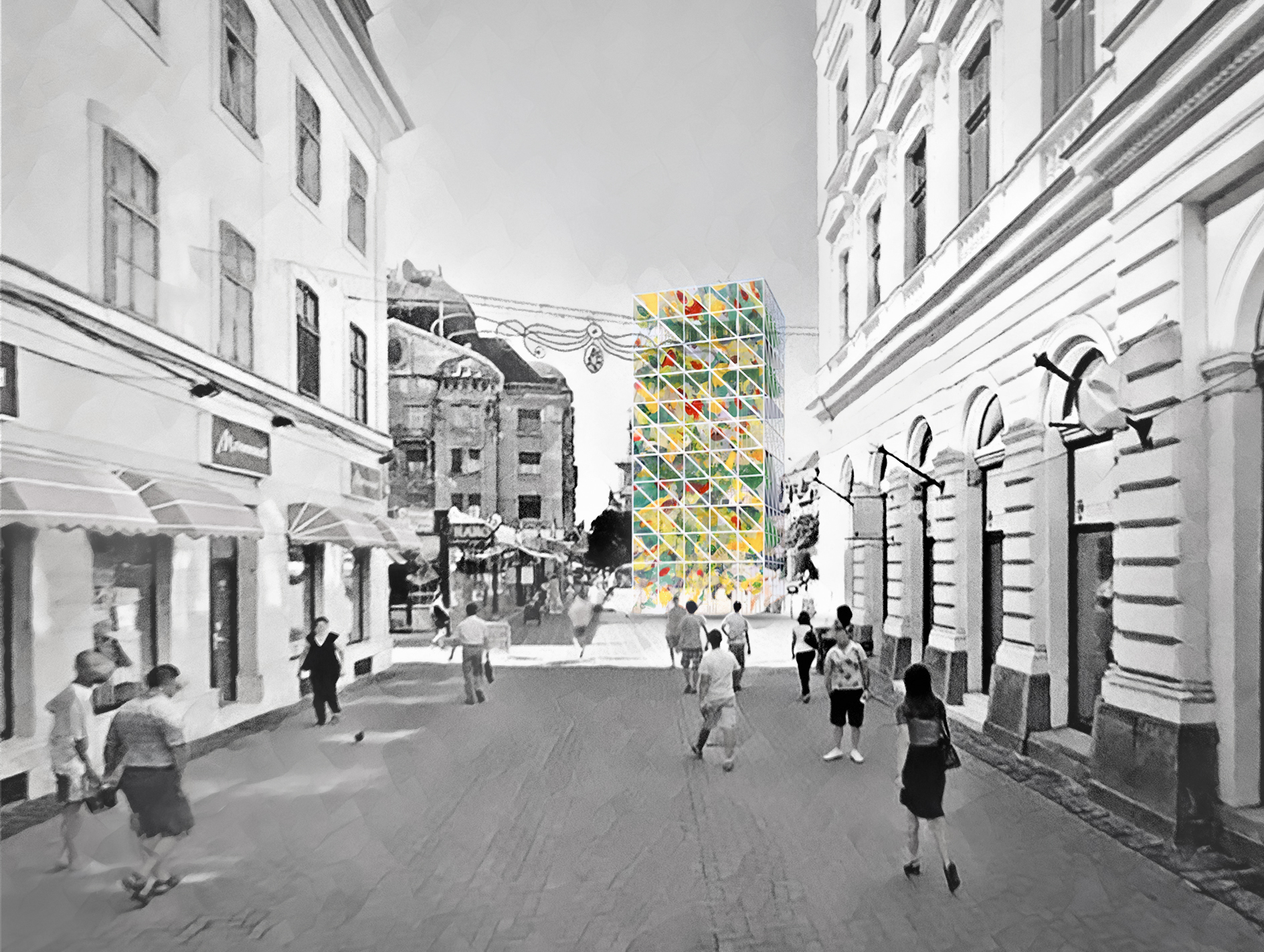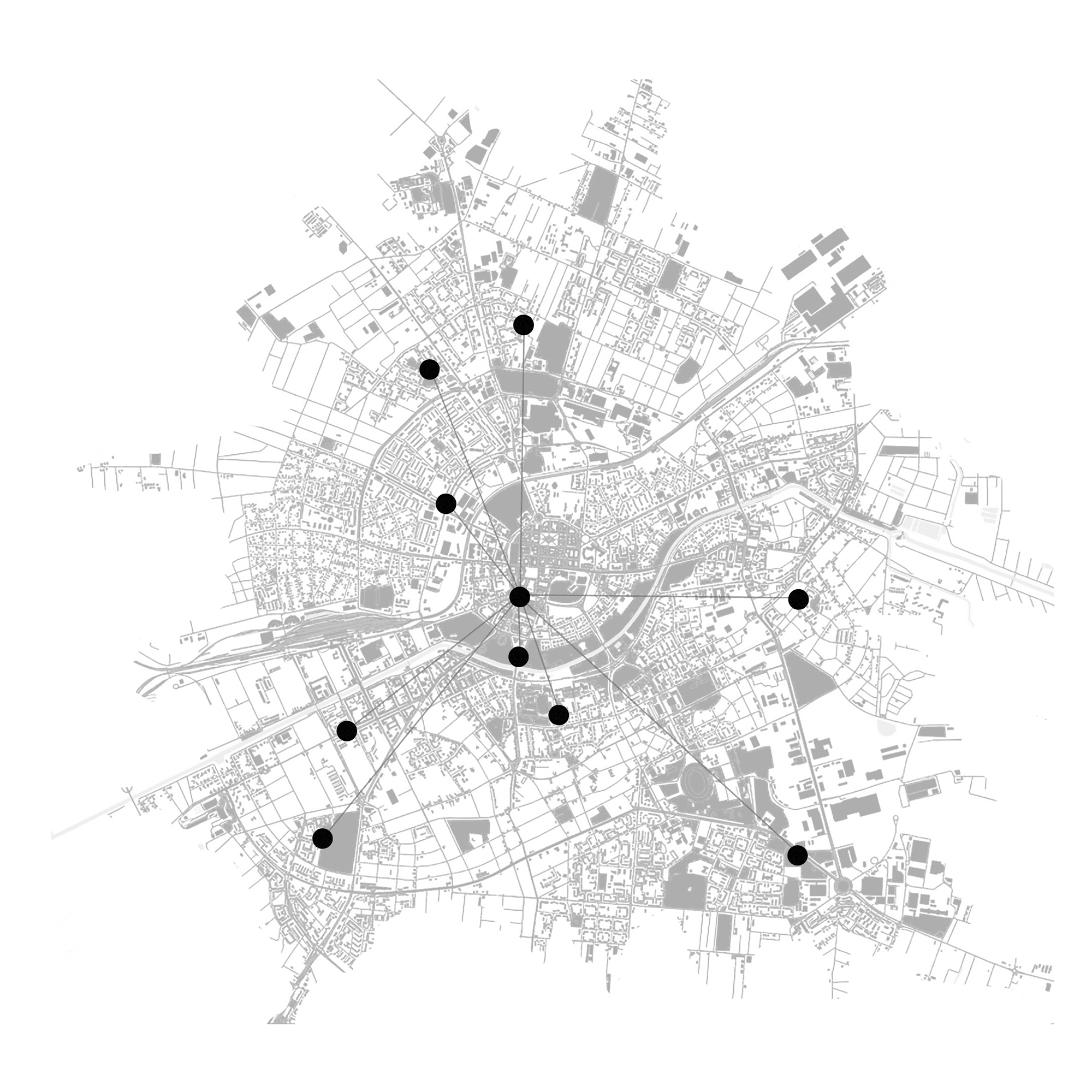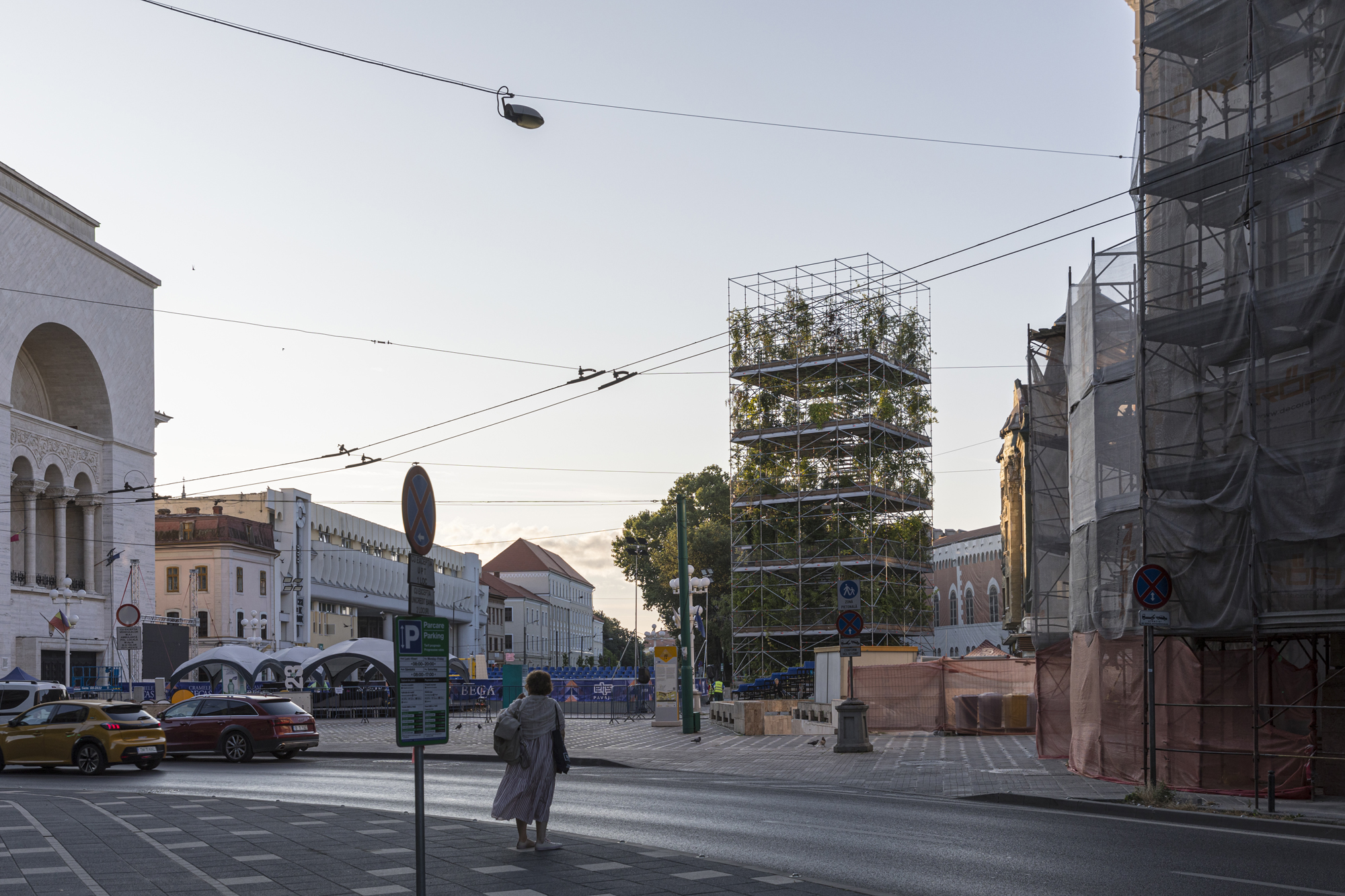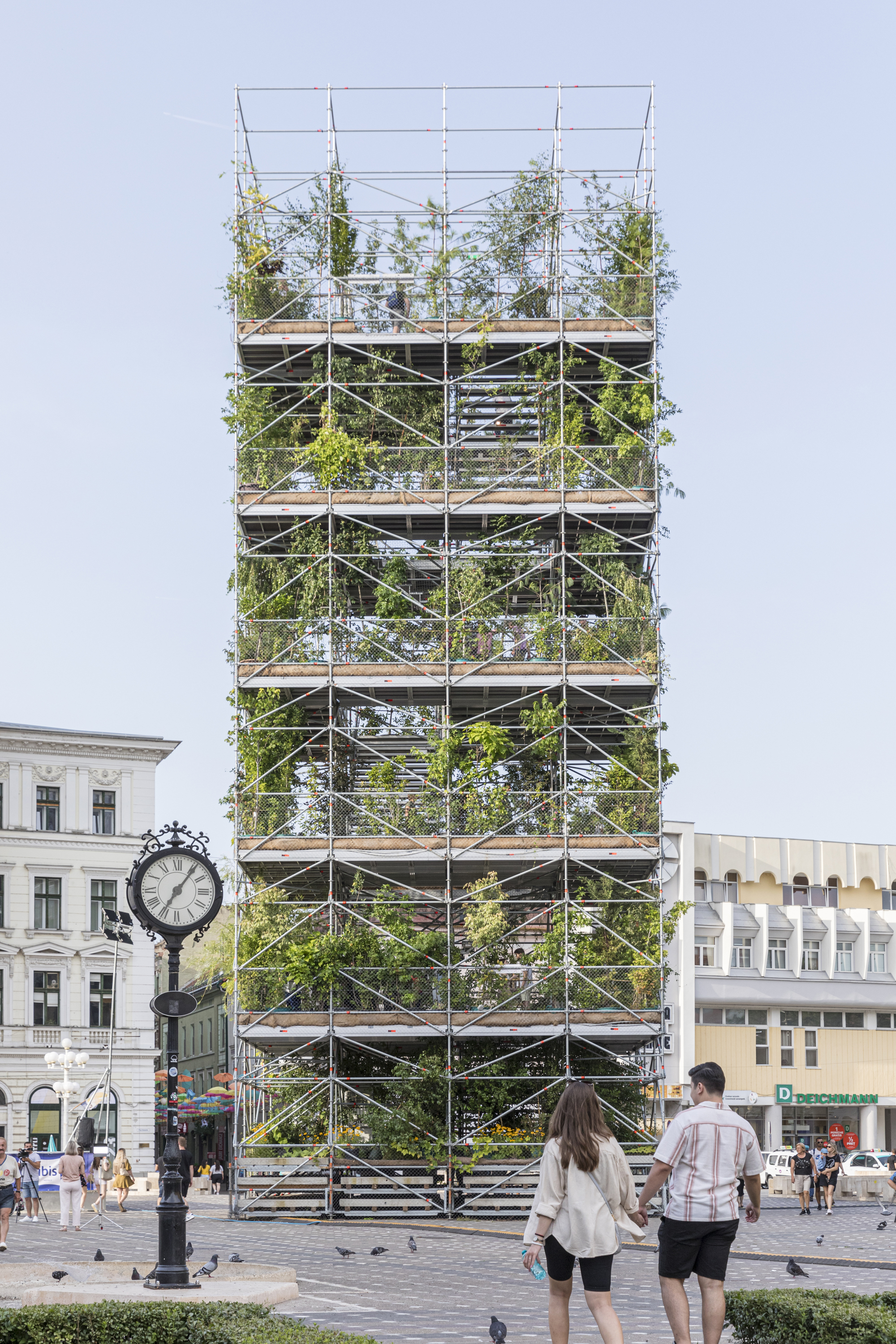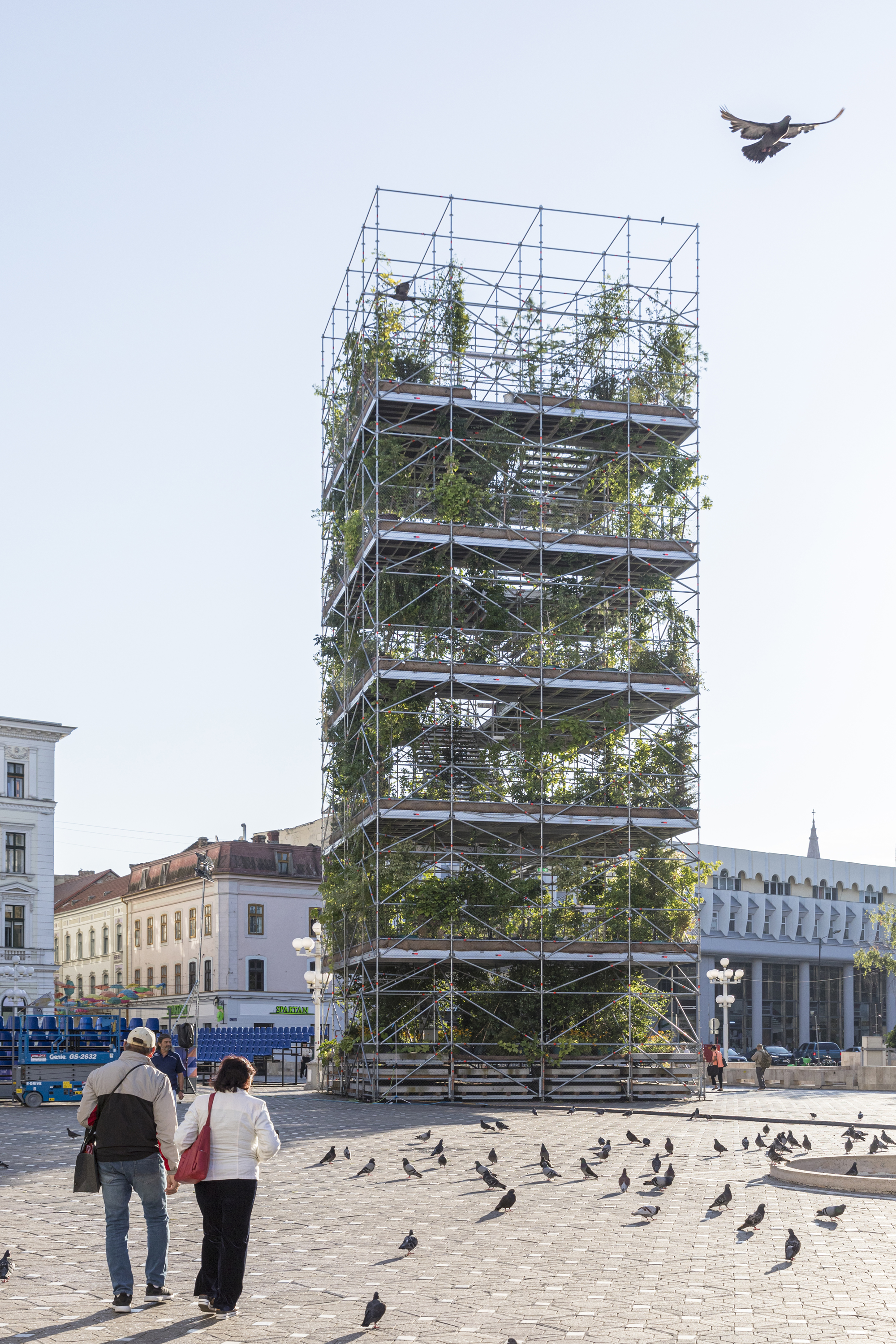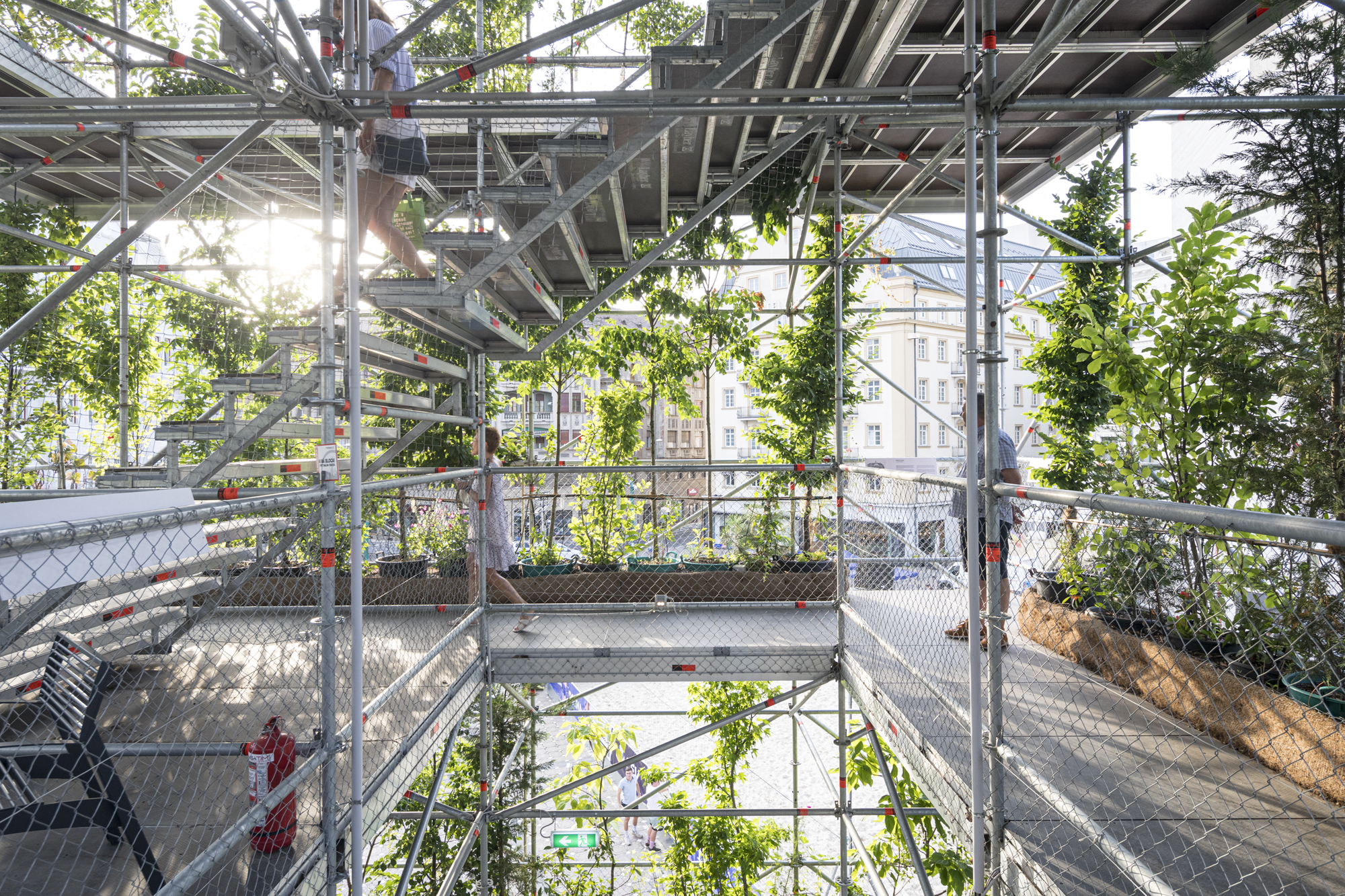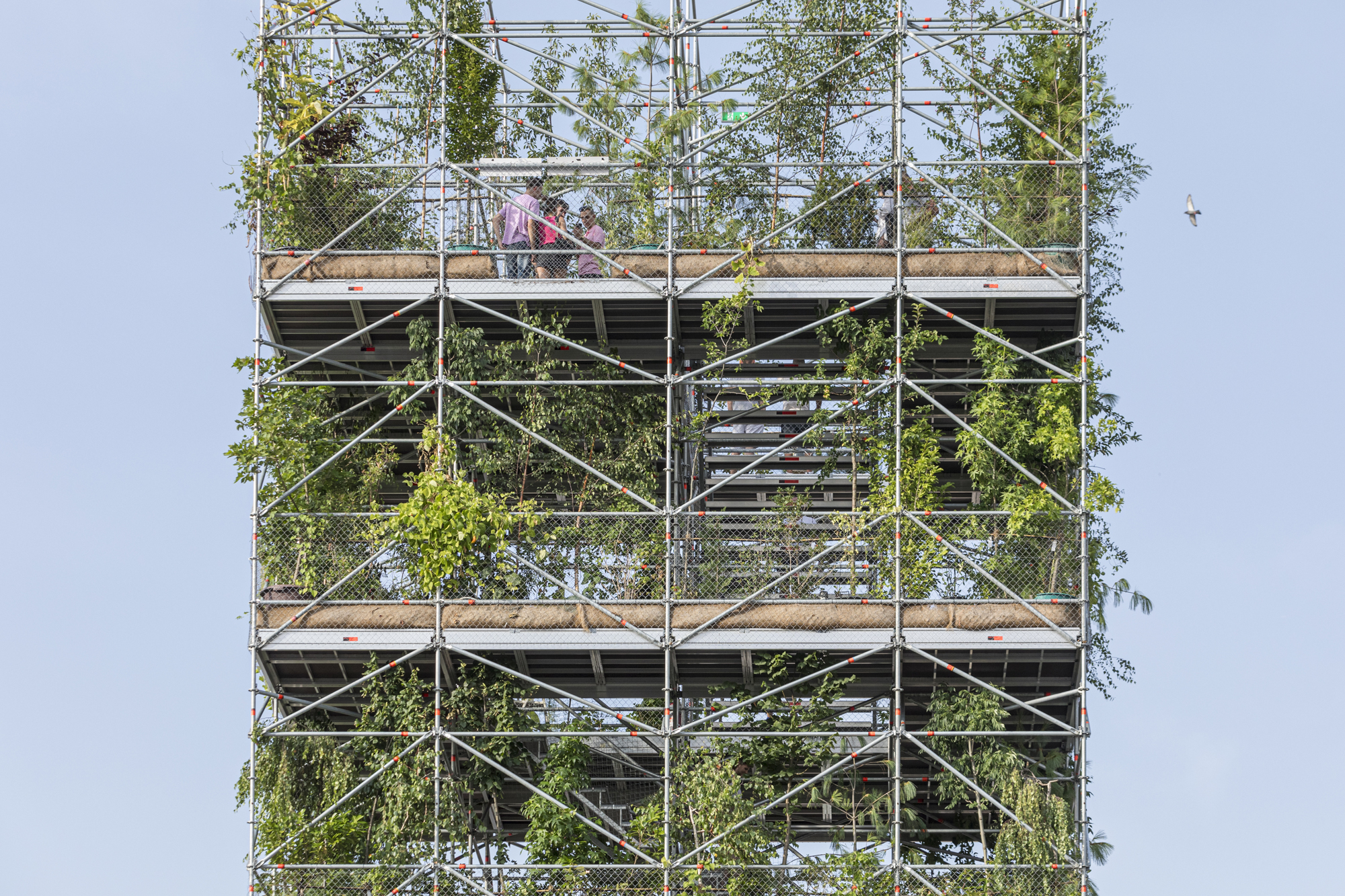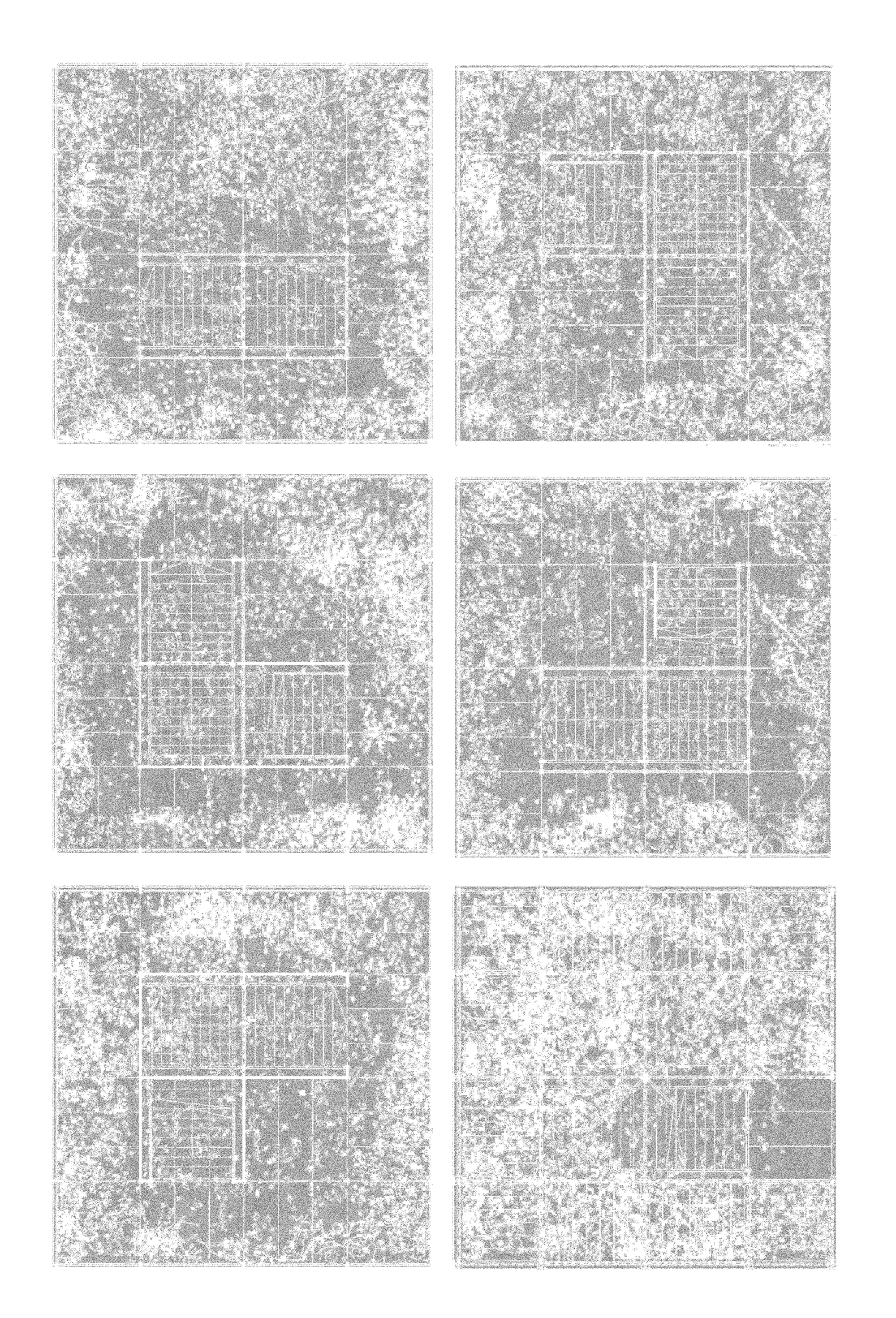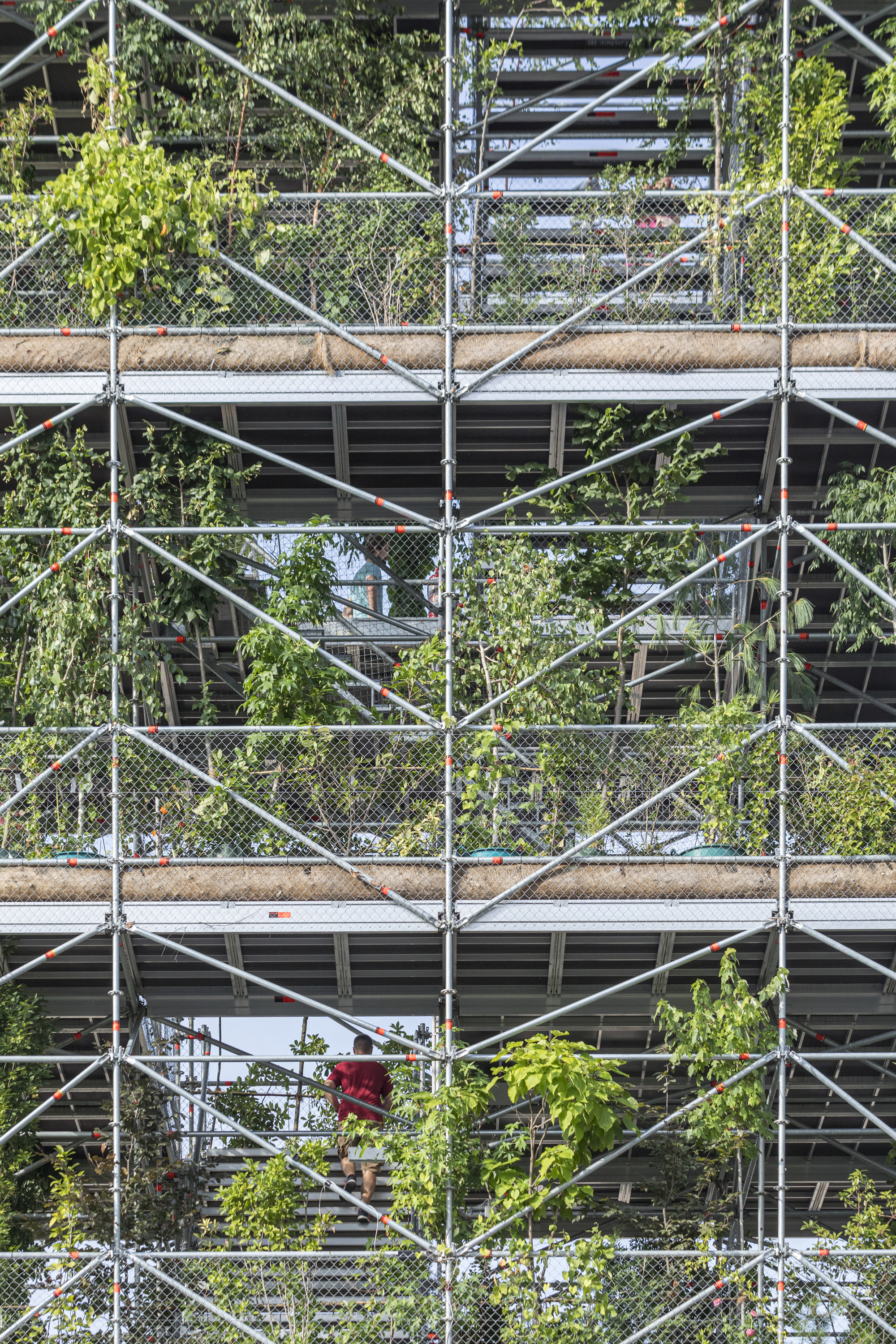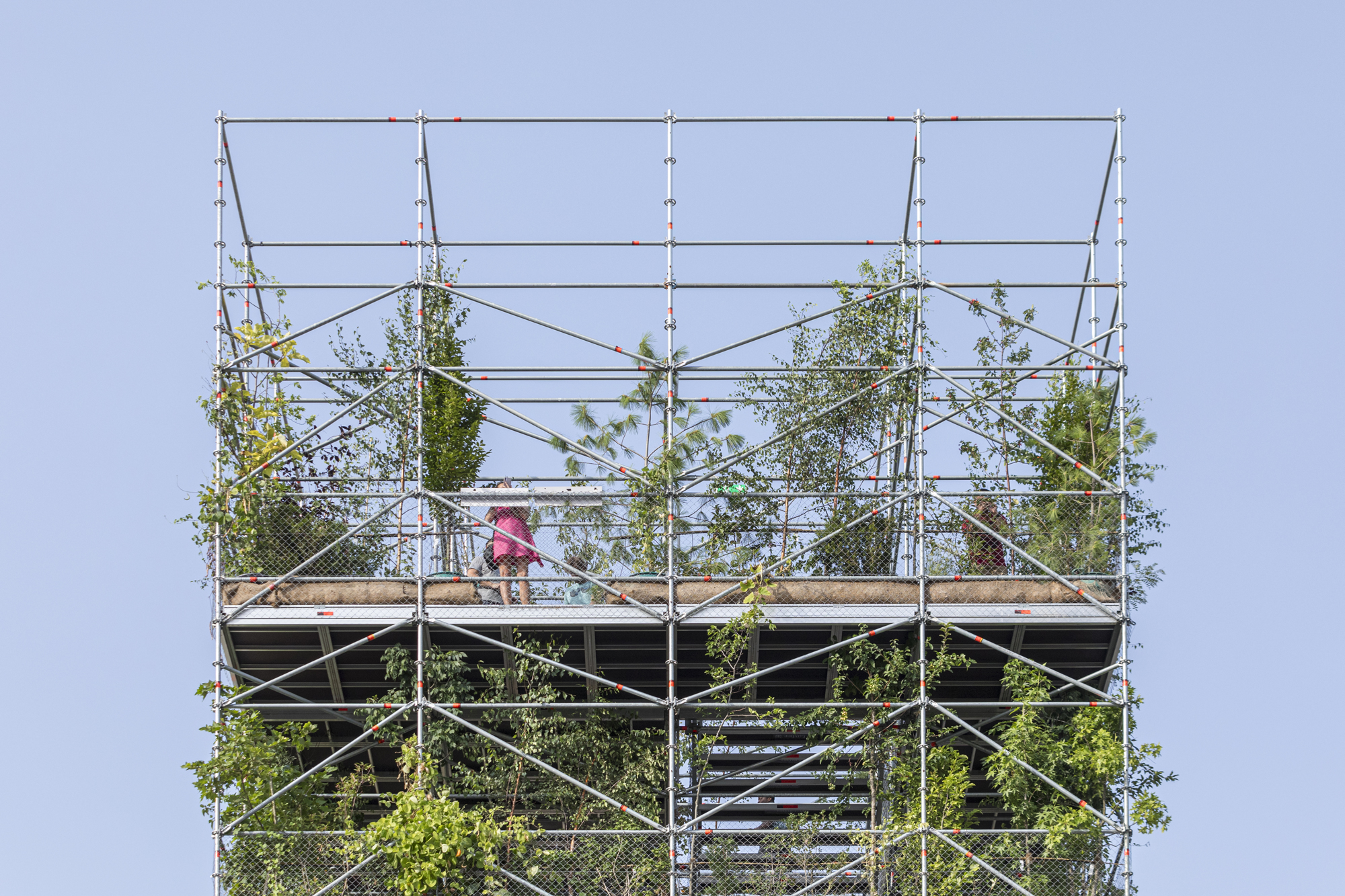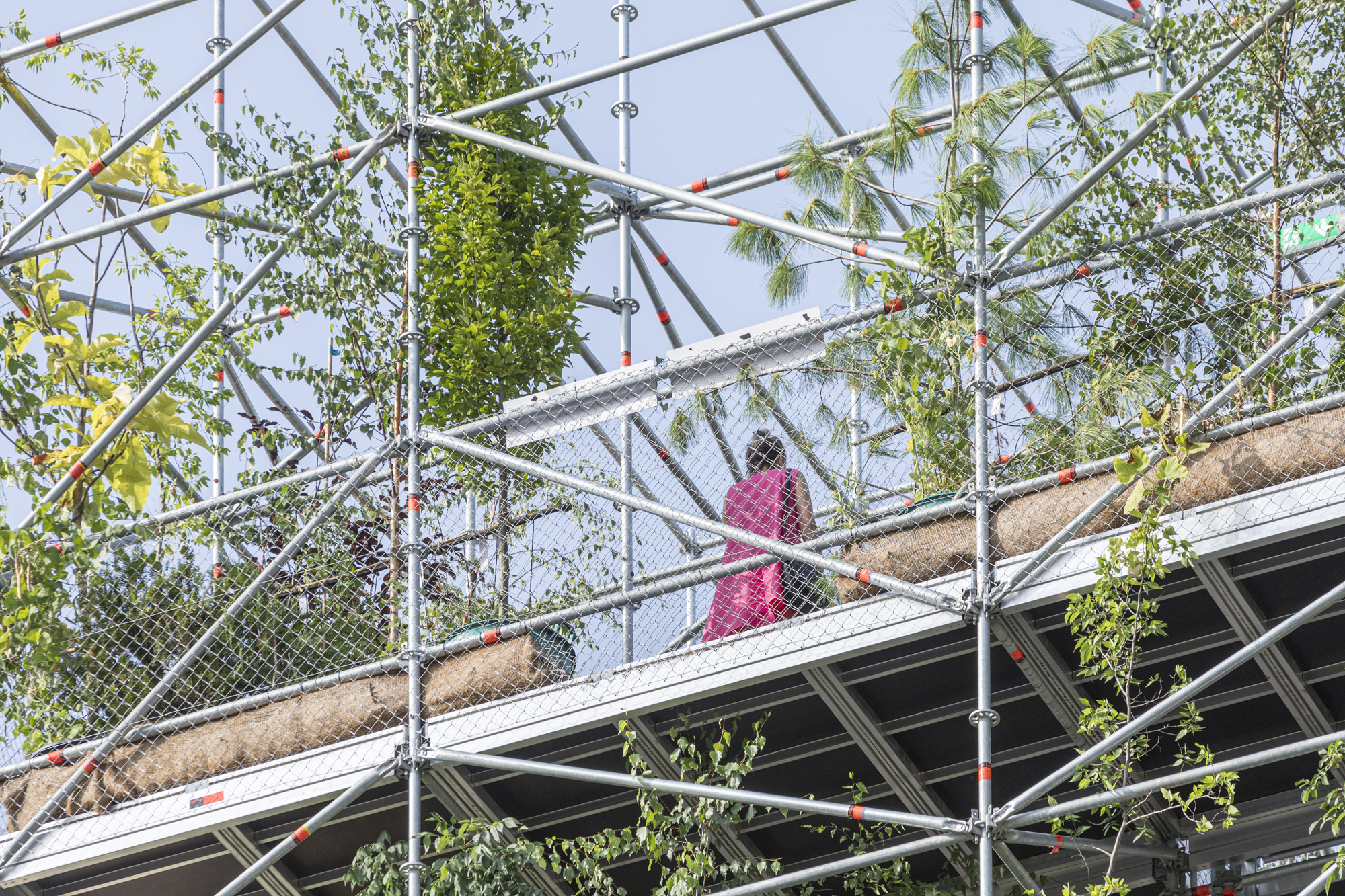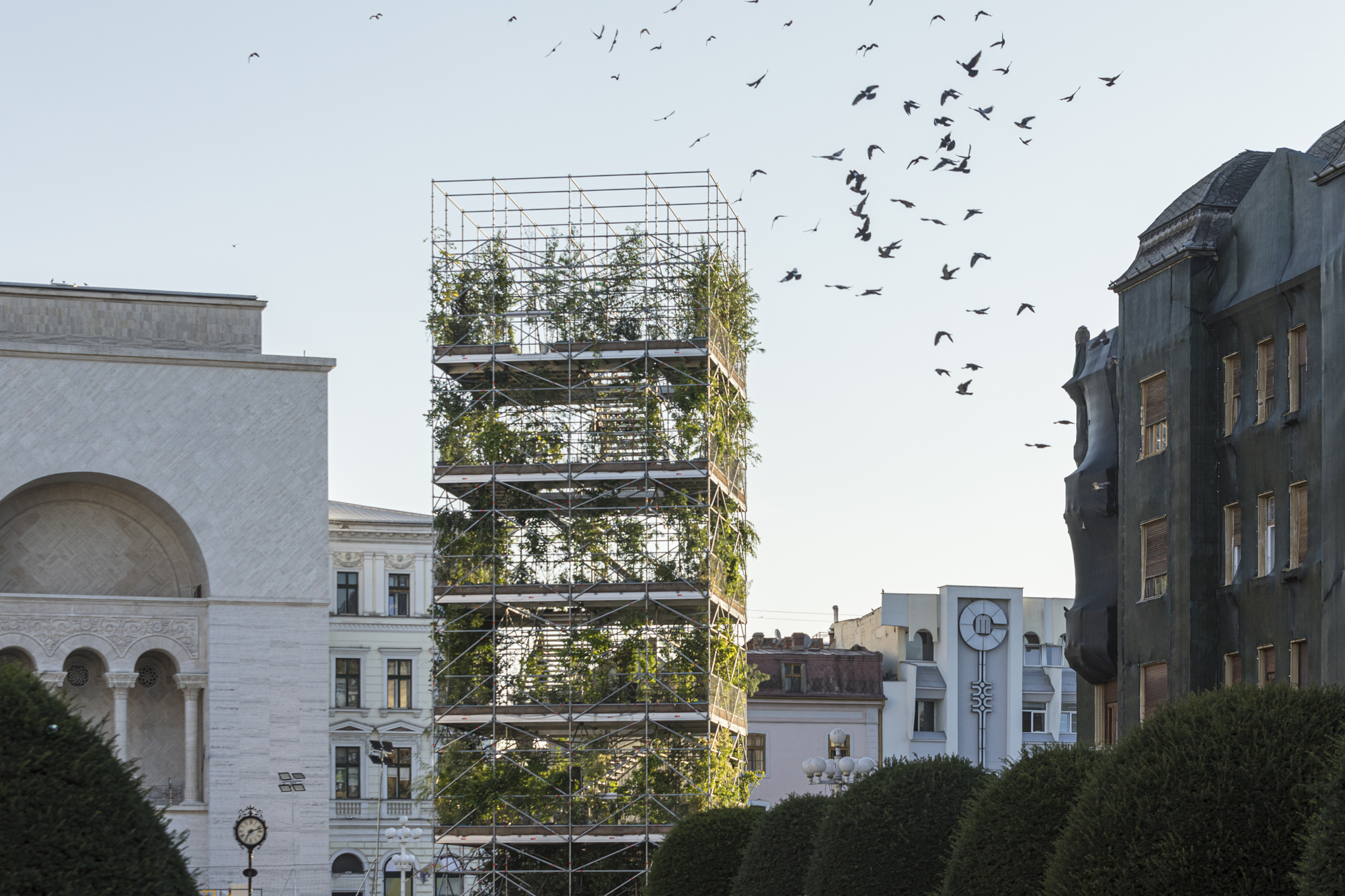Within the frame of Timisoara 2023 European Capital of Culture, the proposal NURSERY: 1,306 PLANTS FOR TIMISOARA occupies a symbolic centrality of the city and therefore aims to be read as an invitation to redefine and intensify the use of public space and its relation with
greenery.
The proposal consists of an ephemeral structure hosting a tree nursery and open spaces for public activities. The installation can be seen as an open test for how public space can be used, designed, and perceived. Having in mind the ongoing urban transformation of the area, the proposal wants to open new perspectives and debates around the uses and temporalities of the city and its engagement with various communities and institutions. Once finished its temporal life-cycle, after hosting them, the intervention will provide new trees and plants to be planted around the City—according to the citizens demands for new green spaces, following a 100% reuse logic. Beyond understanding the proposal as symbolic milestone, the project aims to host and boost activities around or within it where the natural and the domestic merge.
Context
The intervention, sited in Timisoara’s city center, had to function for one year as an urban activator, problematizing how public space is created, used, and perceived by people, precisely in an extremely sensitive, central, and contested place in the city: exactly where the Revolution sparked in 1989, Victory Square, a public space that was designed as a promenade but doesn’t really function as a proper square, with its ornamental non-accessible green area structuring the circulation and dividing the space.
For a city such as Timisoara, hosting the European Capital of Culture 2023 has a deep meaning. Not only for the city and its citizens, but also regarding its immediate EU context, opening a dialogue with the rest of cities of Europe and the common shared guidelines among them. What is the city of the future and what role do nature and more sustainable models play in it? It was less important that it was a tower -or its materiality-, than the fact that the installation -a temporary nursery- contains plants that in the future will be planted along the city generating a debate about its future urbanism.
The project started as a statement towards public space. Providing in the future its 1306 plants to the city of Timisoara, the construction aims to be understood as a general reflection on decision making policies about public space and, specifically, about its management, in this case through greenery.
The tower aims to boost an urban and political debate while adding a new dimension to the accustomed perception of the square. In the last decades we have witnessed a process of black-boxing— a process of occultation of the assets of cities and their management—. Therefore, bringing to the centre of the city a public nursery, aims to make visible a layer that sometimes remains hidden while allowing to emerge a statement about the policies and public spaces.
Public Space
Timisoara is undergoing a process of urban transformation. Therefore, the project has in mind the future transformation of Victory Square, a very symbolic and visible place, inviting to a new understanding of a friendlier and more sustainable public space —from its drainage to how it allows ecosystems to live together—, diverting from recent proposals such as the one for Liberty Square, next to the site, where part of the green was removed and substituted by pavement.
The installation could be seen therefore as an open test for public space where people are invited to understand plants as agents able to regulate climate in cities but also to boost public occupation. Having in mind the future urban transformations of the area, the project aims to open new perspectives and debates around the uses and temporalities of the city and its engagement with various communities and institutions.
Re-use
Once finished its temporary life-cycle, after hosting them, the intervention will provide new trees and plants to be planted around the City, following a 100% re-use logic. The open debate about how, and where, becomes therefore central to the core of the installation.
Program
The installation works mainly as a place for events, an alternative outdoor cultural infrastructure for small-scale activities like gardening workshops, micro-exhibitions, guided tours but also as a scene for sound and movement performances. Also, in a flat landscape where all rooftops are private, a vertical proposal offers a unique view over the city, while providing information regarding the heritage of Timisoara—both built and botanical.
Vegetation
Being aware of the role that nature and, more broadly, new forms of urbanism will play in the future of our cities, the landscape office Studio Peisaj added to the proposal a deep contextual knowledge that ranged from local species to the cultural tradition of horticulture in the area. The Nursery integrates different layers of greenery, from perennial species of trees, shrubs, and flowering plants to annual species (productive and ornamental)- produced in community gardens in Timisoara or at horticultural research and higher education institutions
from the city.
